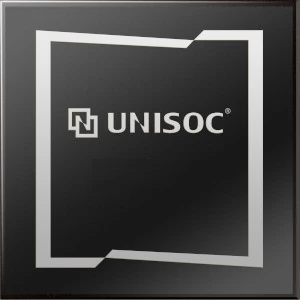MediaTek Dimensity 720 vs Unisoc Tanggula T740 5G
The Unisoc Tanggula T740 5G and the MediaTek Dimensity 720 are two processors that can be compared based on their specifications.
Starting with the Unisoc Tanggula T740 5G, it features a CPU architecture of 4x 1.8 GHz Cortex-A75 cores and 4x 1.8 GHz Cortex-A55 cores. With a total of 8 cores, this processor is designed to deliver a balanced performance. It utilizes the ARMv8.2-A instruction set and has a lithography of 12 nm, which refers to the size of the components on the chip. Additionally, it boasts dual NPUs for enhanced neural processing capabilities.
On the other hand, the MediaTek Dimensity 720 also features 8 cores, but with a different architecture. It consists of 2x 2.2 GHz Cortex-A76 cores and 6x 2 GHz Cortex-A55 cores. With this configuration, the processor aims to provide a combination of high-performance tasks and power efficiency. Similar to the Tanggula T740 5G, it uses the ARMv8.2-A instruction set. However, the Dimensity 720 has a smaller lithography of 7 nm, indicating a more advanced manufacturing process. This can result in improved power efficiency and potentially better overall performance. Moreover, it features an NPU for neural processing tasks.
Overall, both processors have 8 cores and support the ARMv8.2-A instruction set. However, there are some key differences between them. The Tanggula T740 5G has a higher lithography of 12 nm compared to the Dimensity 720's 7 nm. This could affect factors such as power efficiency and heat generation. Additionally, the Tanggula T740 5G utilizes dual NPUs, while the Dimensity 720 has a single NPU. The inclusion of multiple NPUs can potentially enhance AI and machine learning capabilities.
Ultimately, the choice between these two processors depends on the specific requirements and priorities of the user. The Tanggula T740 5G may be suitable for those seeking a balanced performance, while the Dimensity 720 could be more appealing to users looking for power efficiency and potentially better AI capabilities.
Starting with the Unisoc Tanggula T740 5G, it features a CPU architecture of 4x 1.8 GHz Cortex-A75 cores and 4x 1.8 GHz Cortex-A55 cores. With a total of 8 cores, this processor is designed to deliver a balanced performance. It utilizes the ARMv8.2-A instruction set and has a lithography of 12 nm, which refers to the size of the components on the chip. Additionally, it boasts dual NPUs for enhanced neural processing capabilities.
On the other hand, the MediaTek Dimensity 720 also features 8 cores, but with a different architecture. It consists of 2x 2.2 GHz Cortex-A76 cores and 6x 2 GHz Cortex-A55 cores. With this configuration, the processor aims to provide a combination of high-performance tasks and power efficiency. Similar to the Tanggula T740 5G, it uses the ARMv8.2-A instruction set. However, the Dimensity 720 has a smaller lithography of 7 nm, indicating a more advanced manufacturing process. This can result in improved power efficiency and potentially better overall performance. Moreover, it features an NPU for neural processing tasks.
Overall, both processors have 8 cores and support the ARMv8.2-A instruction set. However, there are some key differences between them. The Tanggula T740 5G has a higher lithography of 12 nm compared to the Dimensity 720's 7 nm. This could affect factors such as power efficiency and heat generation. Additionally, the Tanggula T740 5G utilizes dual NPUs, while the Dimensity 720 has a single NPU. The inclusion of multiple NPUs can potentially enhance AI and machine learning capabilities.
Ultimately, the choice between these two processors depends on the specific requirements and priorities of the user. The Tanggula T740 5G may be suitable for those seeking a balanced performance, while the Dimensity 720 could be more appealing to users looking for power efficiency and potentially better AI capabilities.
AnTuTu 10
Total Score
GeekBench 6 Single-Core
Score
GeekBench 6 Multi-Core
Score
CPU cores and architecture
| Architecture | 2x 2.2 GHz – Cortex-A76 6x 2 GHz – Cortex-A55 |
4x 1.8 GHz – Cortex-A75 4x 1.8 GHz – Cortex-A55 |
| Number of cores | 8 | 8 |
| Instruction Set | ARMv8.2-A | ARMv8.2-A |
| Lithography | 7 nm | 12 nm |
| TDP | 10 Watt | |
| Neural Processing | NPU | Dual NPU |
Memory (RAM)
| Max amount | up to 12 GB | up to 8 GB |
| Memory type | LPDDR4X | LPDDR4X |
| Memory frequency | 2133 MHz | 1866 MHz |
| Memory-bus | 2x16 bit |
Storage
| Storage specification | UFS 2.2 | UFS 2.1 |
Graphics
| GPU name | Mali-G57 MP3 | Imagination PowerVR GM9446 |
| GPU Architecture | Mali Valhall | PowerVR Rogue |
| GPU frequency | 850 MHz | 800 MHz |
| Execution units | 3 | |
| DirectX | 12 | |
| OpenCL API | 2.1 | 4.0 |
| OpenGL API | ES 3.2 | ES 3.2 |
| Vulkan API | 1.2 | 1.1 |
Camera, Video, Display
| Max screen resolution | 2520x1080@90Hz | 2960x1440@60Hz |
| Max camera resolution | 1x 64MP, 1x 20MP + 1x 16MP | 1x 64MP |
| Max Video Capture | 4K@30FPS | 4K@30fps |
| Video codec support | H.264 (AVC) H.265 (HEVC) VP9 |
H.264 (AVC) H.265 (HEVC) VP8 VP9 |
Wireless
| 4G network | Yes | Yes |
| 5G network | Yes | Yes |
| Peak Download Speed | 2.77 Gbps | 1.5 Gbps |
| Peak Upload Speed | 1.2 Gbps | 0.75 Gbps |
| Wi-Fi | 5 (802.11ac) | 5 (802.11ac) |
| Bluetooth | 5.1 | 5.0 |
| Satellite navigation | BeiDou GPS Galileo GLONASS NavIC QZSS |
BeiDou GPS Galileo GLONASS |
Supplemental Information
| Launch Date | 2020 Quarter 3 | 2020 Quarter 1 |
| Partnumber | MT6853V/ZA, MT6853V/NZA | T740, Tiger T7510 |
| Vertical Segment | Mobiles | Mobiles |
| Positioning | Mid-end | Mid-end |
Popular comparisons:
1
MediaTek Dimensity 8020 vs Samsung Exynos 1480
2
Samsung Exynos 8890 vs Qualcomm Snapdragon 665
3
Qualcomm Snapdragon 750G vs MediaTek Dimensity 9200
4
Apple A10X Fusion vs Apple M3 (iPad)
5
Qualcomm Snapdragon 8 Gen 2 vs HiSilicon Kirin 930
6
MediaTek Helio G88 vs Samsung Exynos 9810
7
HiSilicon Kirin 810 vs Samsung Exynos 2400e
8
HiSilicon Kirin 9000 5G vs MediaTek Helio A22
9
Google Tensor G1 vs Qualcomm Snapdragon 662
10
MediaTek Helio G36 vs Samsung Exynos 980

